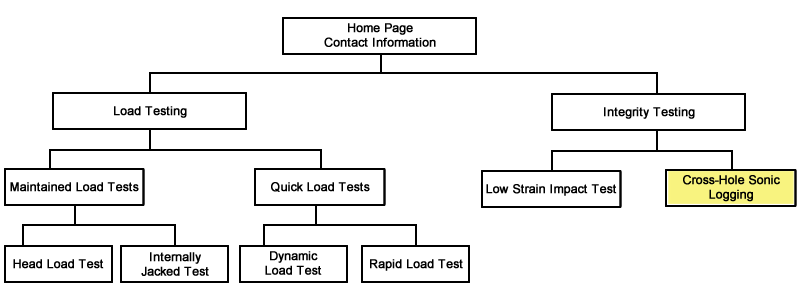Crosshole sonic logging (CSL) is a method to verify the structural integrity of drilled shafts and other concrete piles. It is also called: “Crosshole Acoustical Testing”.
CSL normally requires steel (preferred) or PVC access tubes installed longitudinally down the drilled shaft, equi-spaced round its perimeter, by tying them to the reinforcing steel cage before the cage is placed in the hole. Concrete is placed in the normal manner, appropriate to the ground conditions. Steel CSL tubes are preferred to PVC tubes because PVC tubes sometimes debond from the concrete due to the heat from the hydration of the cement in concrete, resulting in erratic CSL test results.
After curing for 3-7 days, the tubes are filled with water as an intermediate medium and a sound source and receiver are lowered simultaneously down two of the tubes, maintaining them together at the same level in the pile. A sonic pulse is generated from the source and is recorded by the receiver. Relative energy, waveform and time taken from source to receiver are recorded and logged. This procedure is repeated at regular intervals (approximately 100mm) throughout the pile and then mapped. By comparing the graphs from the various combinations of access tubes, a qualitative view of the structural soundness of the concrete throughout the pile can be obtained.
Tambew does not presently have the equipment to do this test, but its procurement is being investigated.
Tambew does offer the LOW STRAIN IMPACT integrity test.
TAMBEW’S WEBSITE ARRANGEMENT

